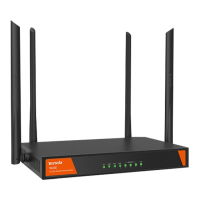118
It is used to delete the selected rule.
It is used to export .cfg configuration files. You are recommended to
export the data after adding the account. Therefore, you can restore the
data by directly importing the documents without re-addition if the user
data is lost.
It is used to select the previously exported configuration documents.
It is used to import the selected user data.
It specifies authentication-free host types, including IP address and MAC
address.
It specifies the address of authentication-free hosts, including IP address
and MAC address.
It specifies the description of the authentication-free host (if any).
It specifies the status of the authentication-free host, including Enabled
and Disabled.
The following operations can be preformed on the rules:
: It is used to disable the rule.
: It is used to enable the rule.
: It is used to edit the rule, including MAC address, and remark.
: It is used to delete the rule.
It specifies the username used for web authentication.
It specifies the password used for web authentication.
It displays the description (if any) of the corresponding account.
It specifies the current status of the account, including Enabled and
Disabled.
The following operations can be preformed on the rules:
: It is used to disable the rule.
: It is used to enable the rule.
: It is used to edit the rule.
: It is used to delete the rule.
11.2.2 Adding Authentication-free Host
Step 1 To access the page, choose Captive Portal > User Management.
Step 2 In Authentication-free Host Module, Click +Add.

